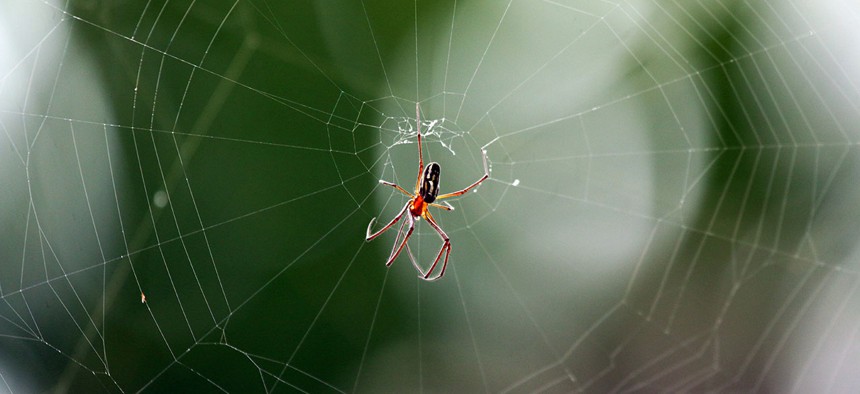
Researchers inserted DNA from the golden silk orb-weaver spider (Nephila clavipes) into silkworms. Wikimedia Commons
The Army is Testing Genetically Engineered Spider Silk for Body Armor
Inserting spider DNA into silkworms yields a tough fabric that’s far more flexible than Kevlar.
Spider silk is one of nature’s toughest substances, similar in strength to the Kevlar plastic found in bulletproof vests but much more flexible. Kraig Biocraft, a company out of Ann Arbor, Michigan, genetically altered silkworms to produce a fiber that’s similar to pure spider silk. Today, they announced an Army contract to test this so-called Dragon Silk for possible use in body armor.
There’s a reason that silk from worms is cheap but you can’t buy pajamas made from spider fabric: spiders are territorial and cannibalistic, which makes farming them for fabric production almost exorbitant.
Enter the brave new wonder that is genetic engineering. In 2000, researchers first isolated and sequenced the key proteins that create spider silk (ampullate spidroin-1, spidroin-2, etc.) That let scientists reproduce spider silk proteins in yeast, E coli bacteria, and other substances in somewhat the same way as pharmaceutical companies produce proteins for drugs. But these methods didn’t yield a lot of spider fabric.
The technology behind Dragon Silk is based in part on the work of Malcolm J. Fraser, Donald L. Jarvis, and their colleagues. As they explain in this paper, they introduce specific pieces of spider DNA into silkworm eggs, creating an entirely new type of silkworm that can spin spider silk.
Yeah.
The Army’s Soldier Protection and Individual Equipment, or PM-SPIE office, will give Kraig $100,000 to test a series of “shoot packs” to see how the material stands up to abuse.
“We are going to provide them a series of different thread counts, thicknesses, construction techniques that they will test against standard material performance specifications,” said Kraig chief operating officer Jon Rice. If the material performs well, the Army may increase the award to $1 million.
Rice doesn’t anticipate that Dragon Silk will be a direct replacement for Kevlar, which has a strength of 3 gigapascals. Spider silk has a strength of 2 gigapascals, only about two-thirds as strong.
“But Kevlar has an elasticity of 3 percent,” says Rice. “If you have a Kevlar fiber, it’s not going to move at all. Our fibers have a 30 to 40 percent elasticity before they break.”
NEXT STORY: The U.S. Fight Against ISIS in Iraq







